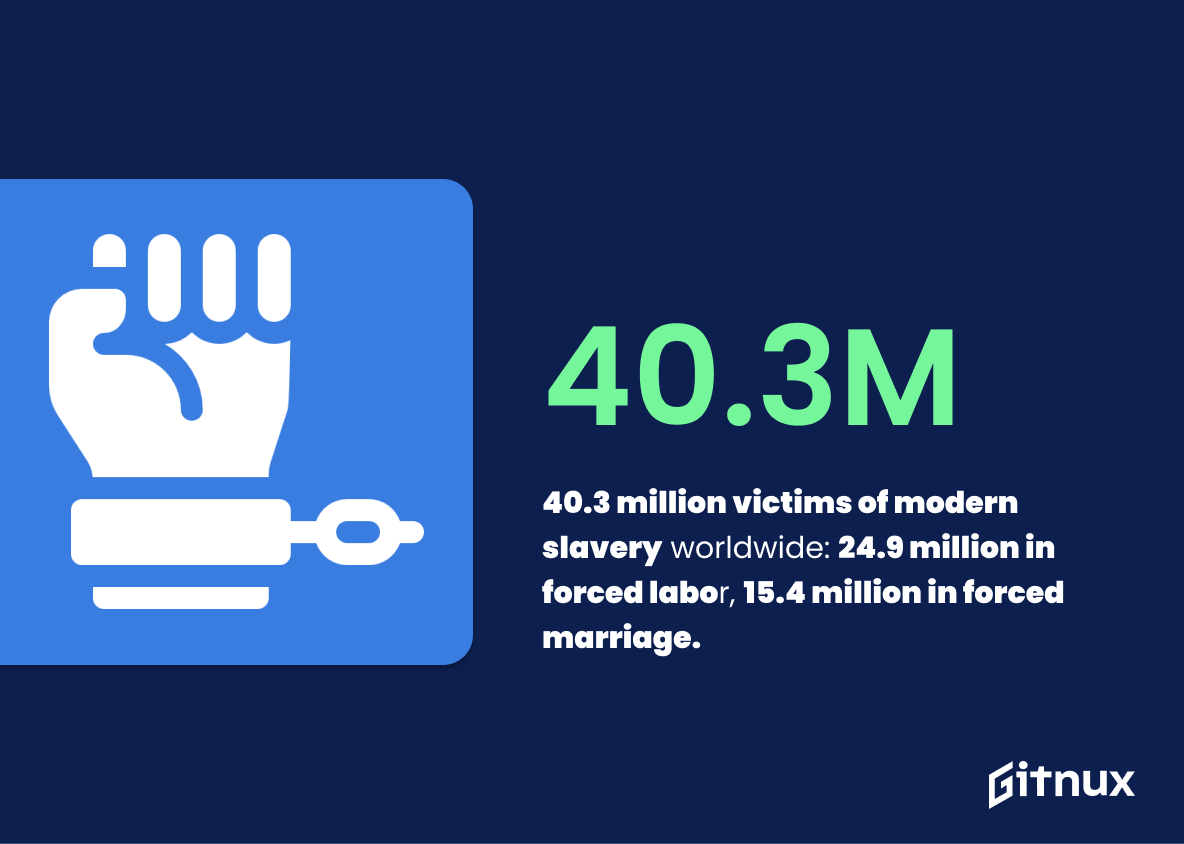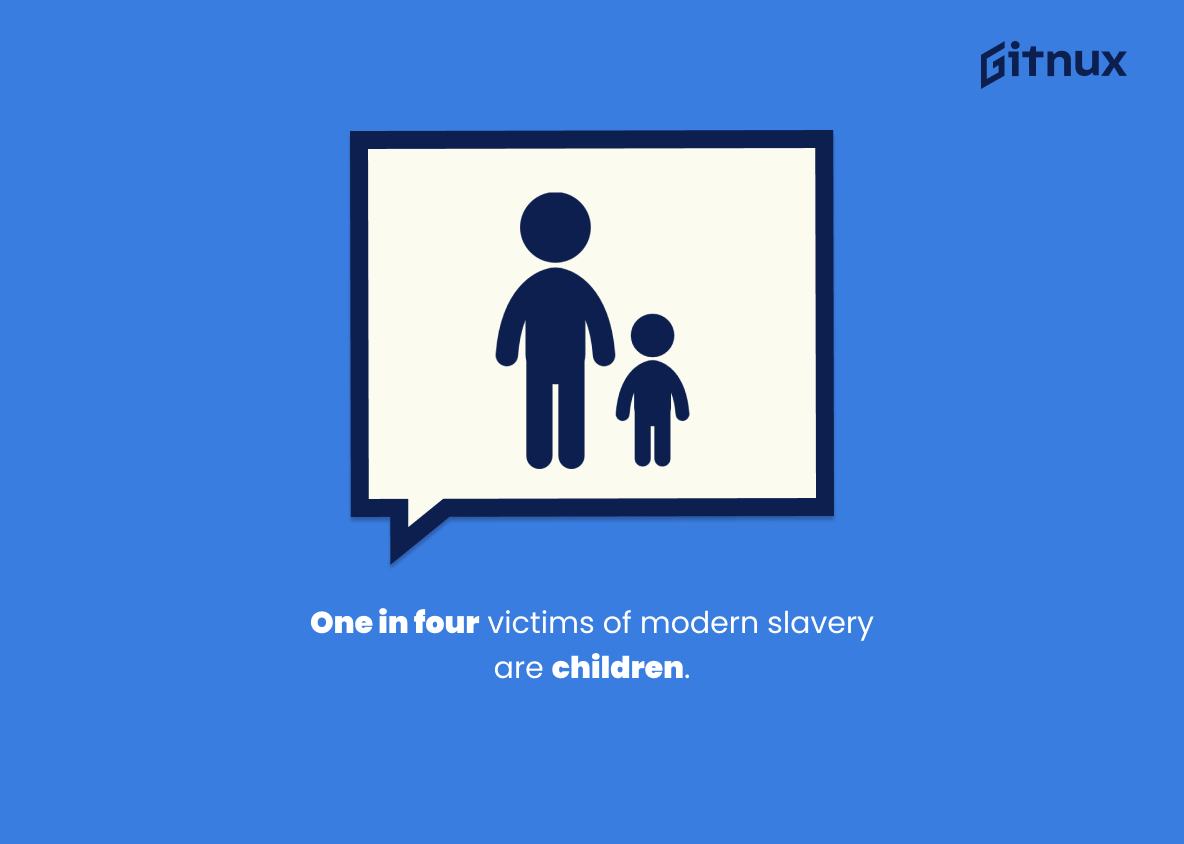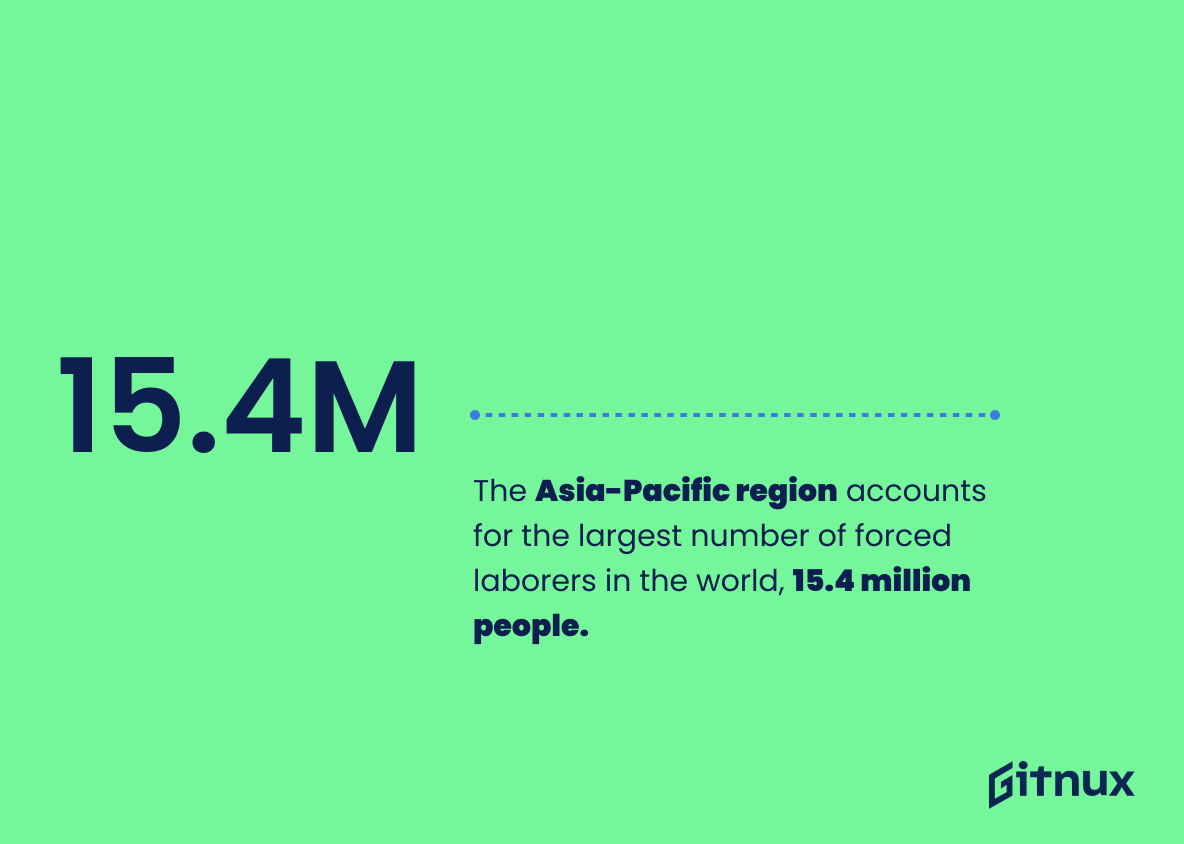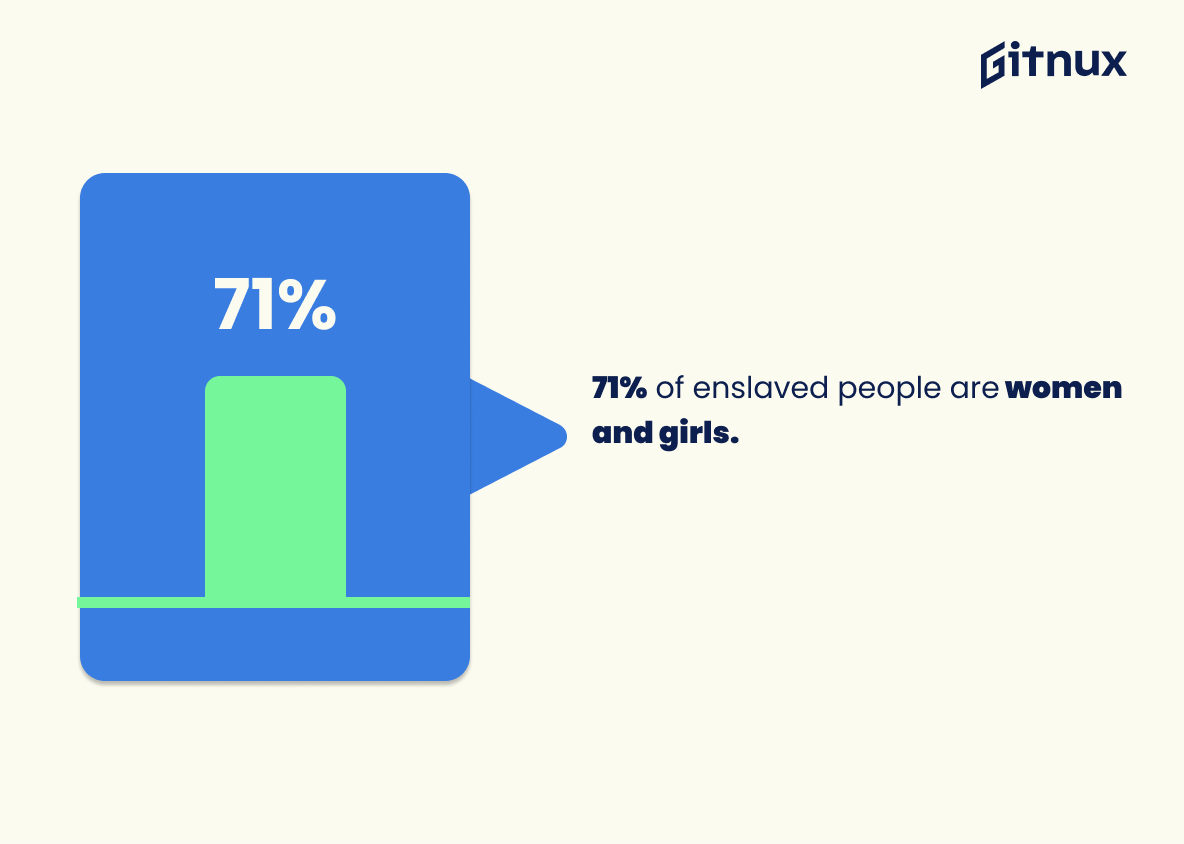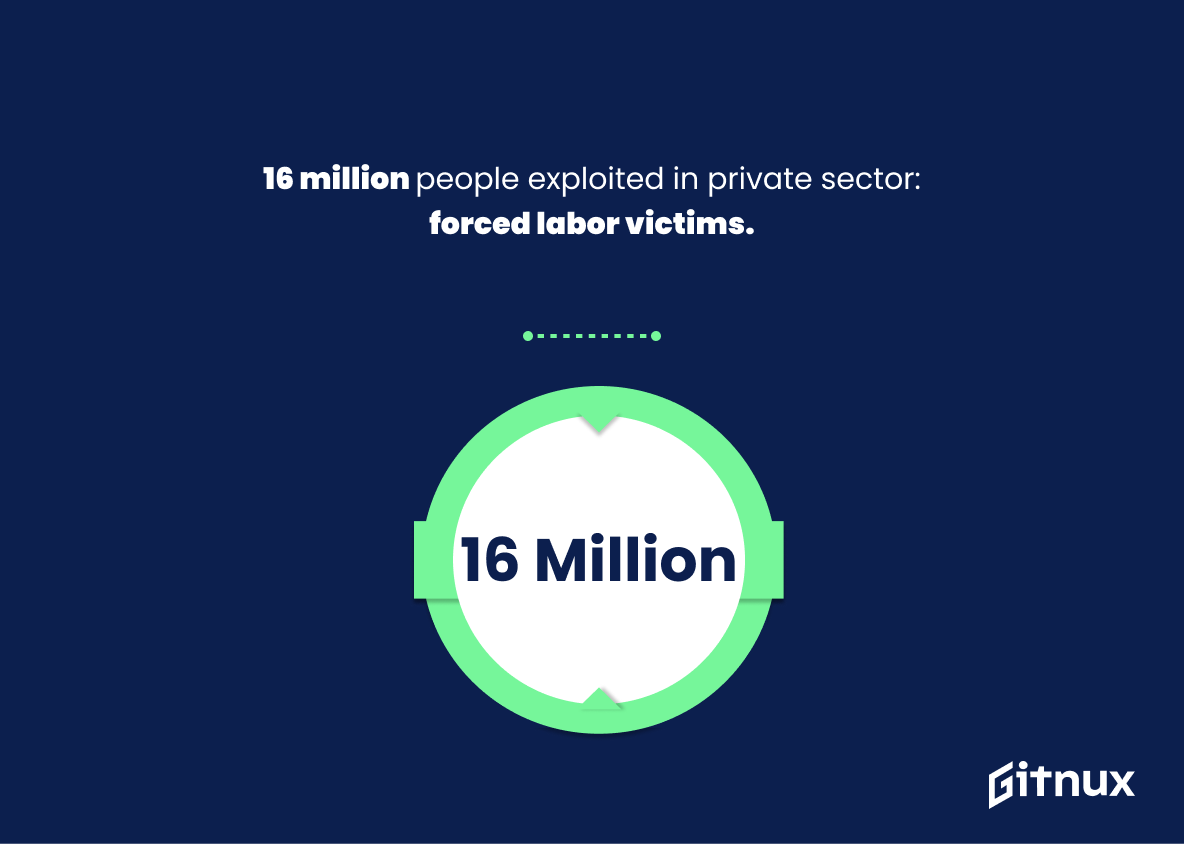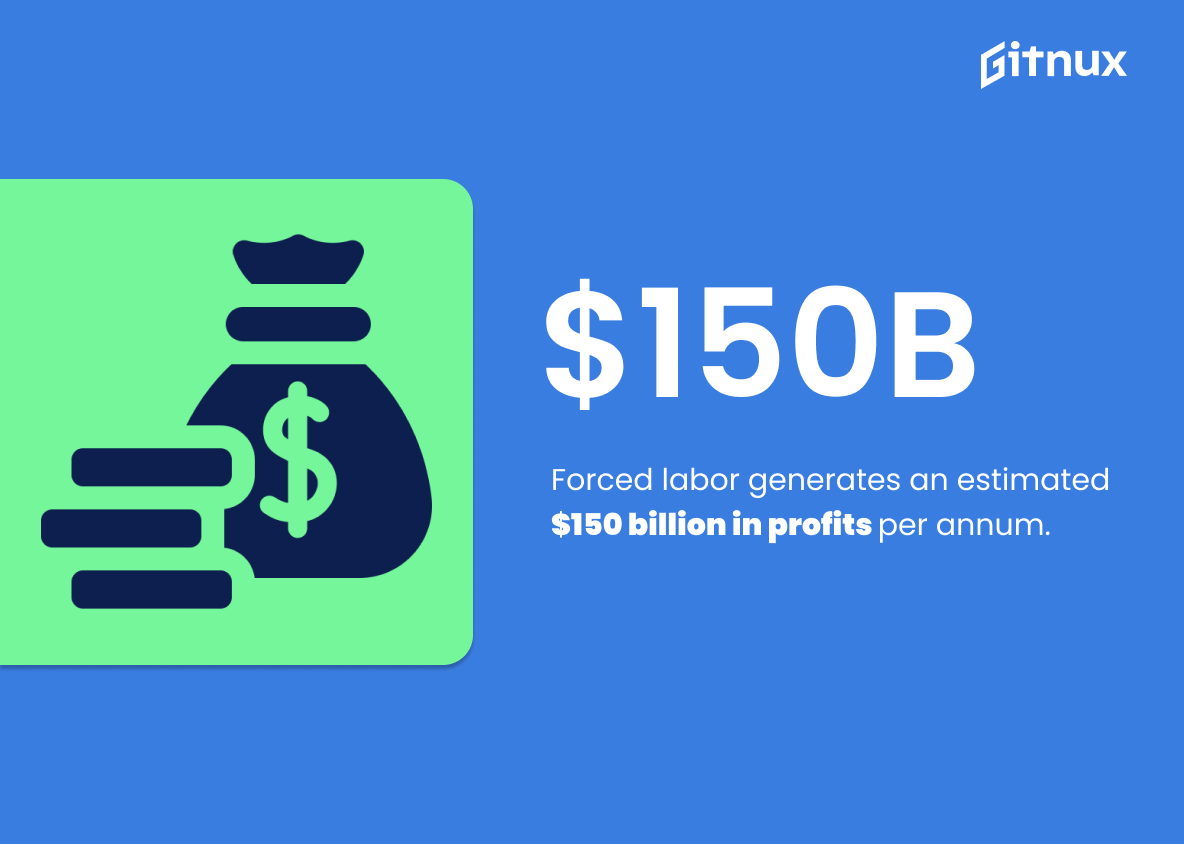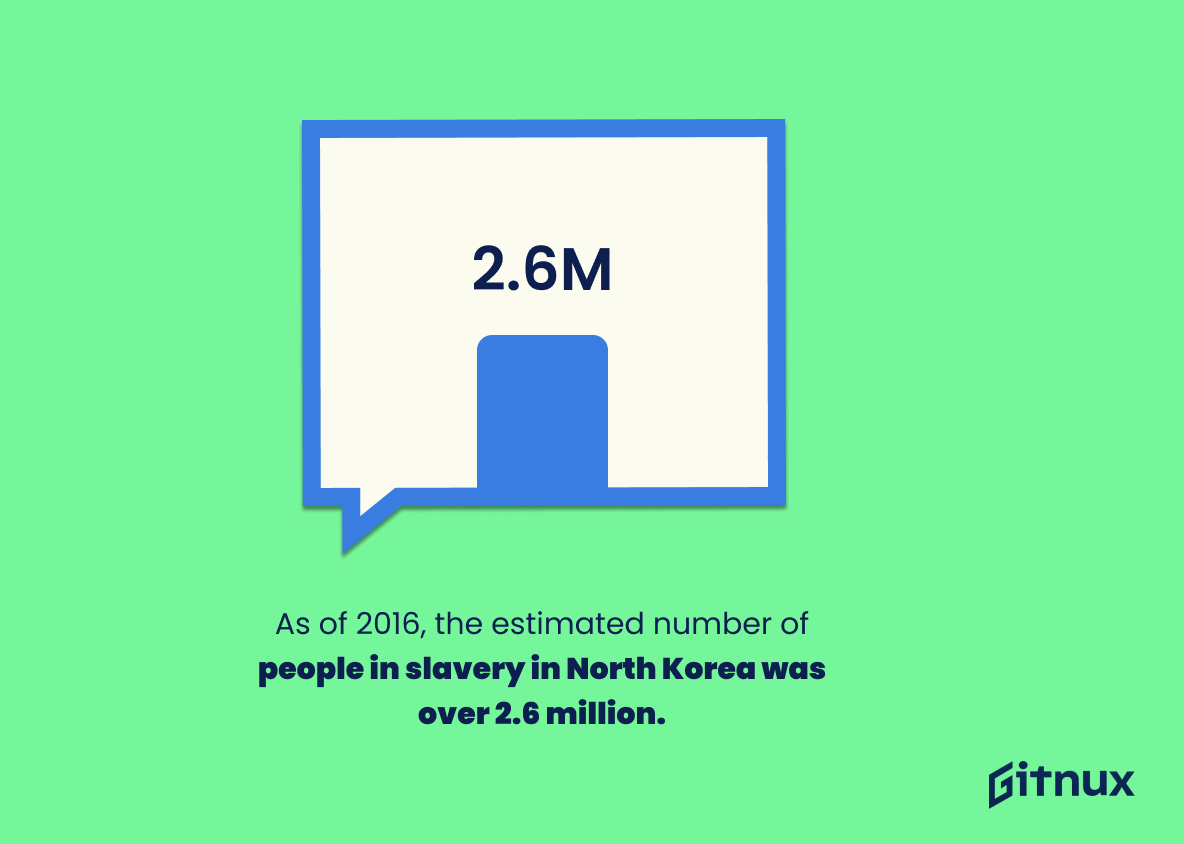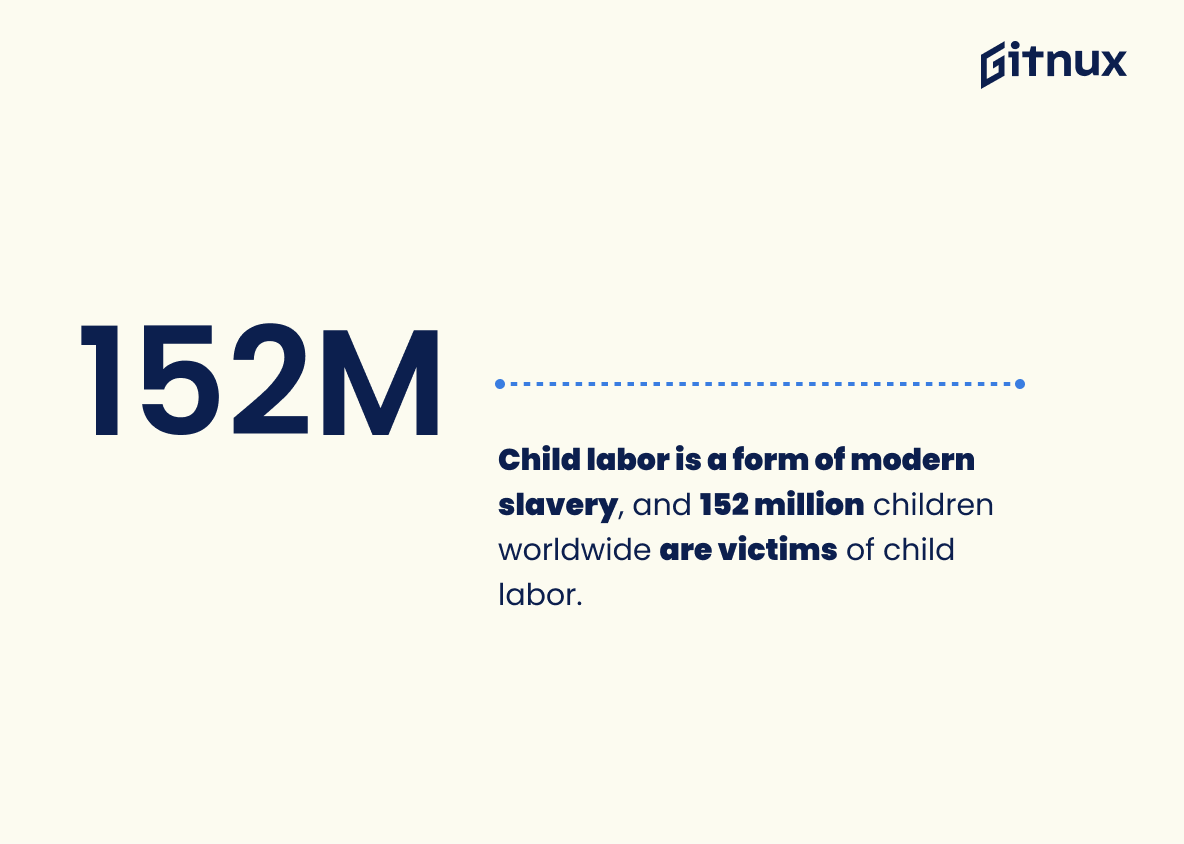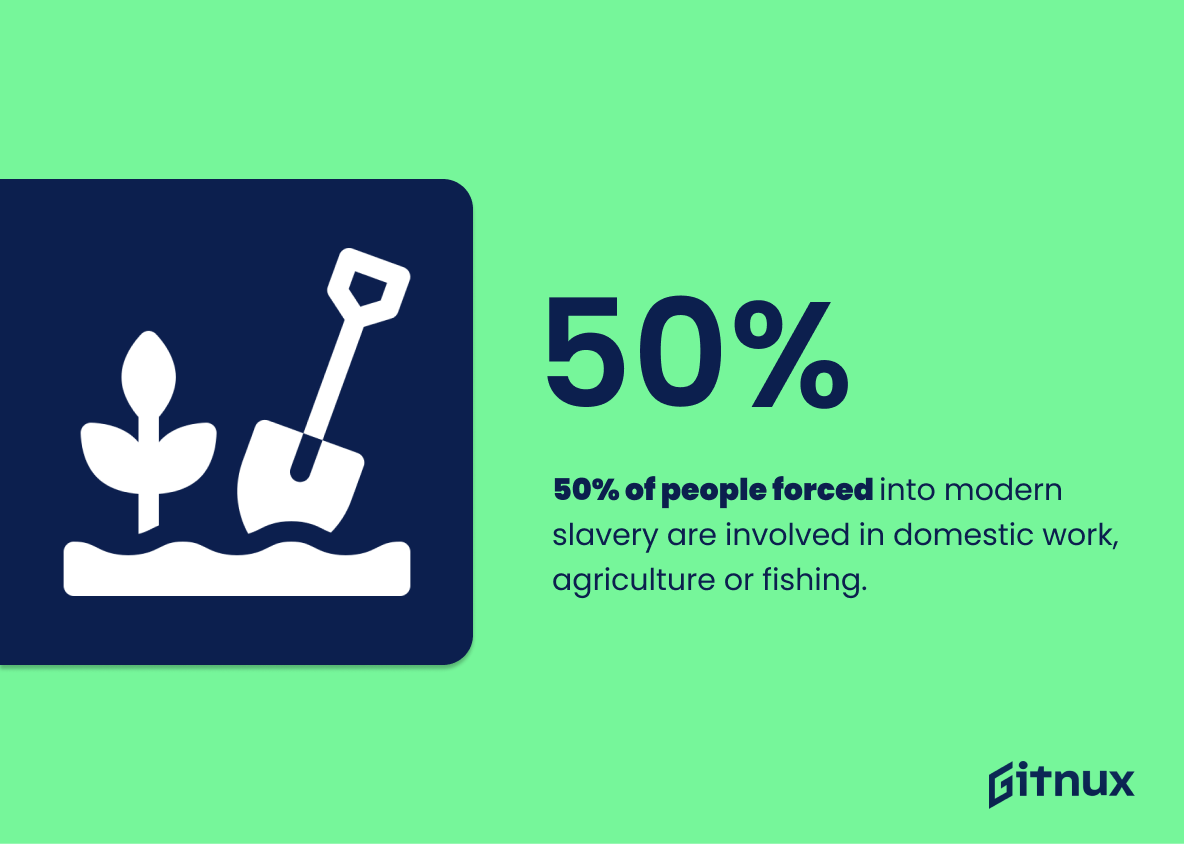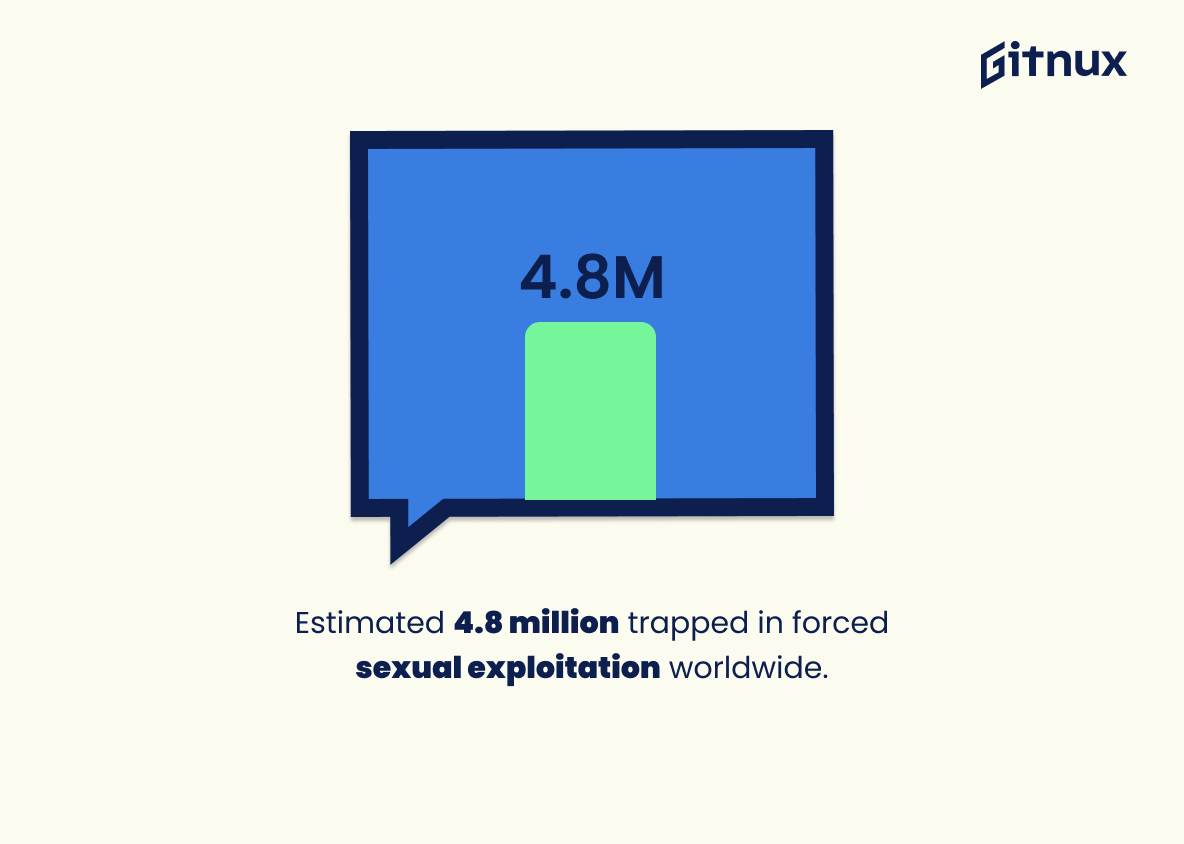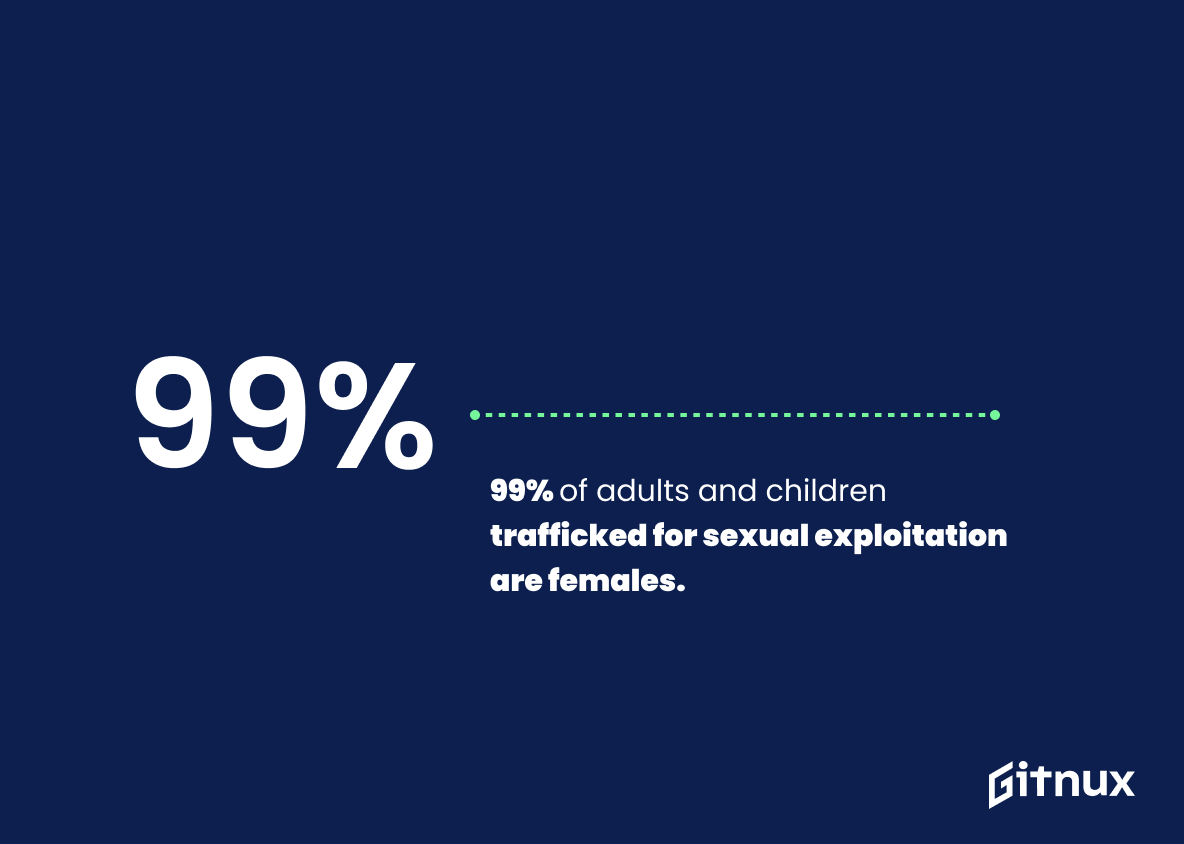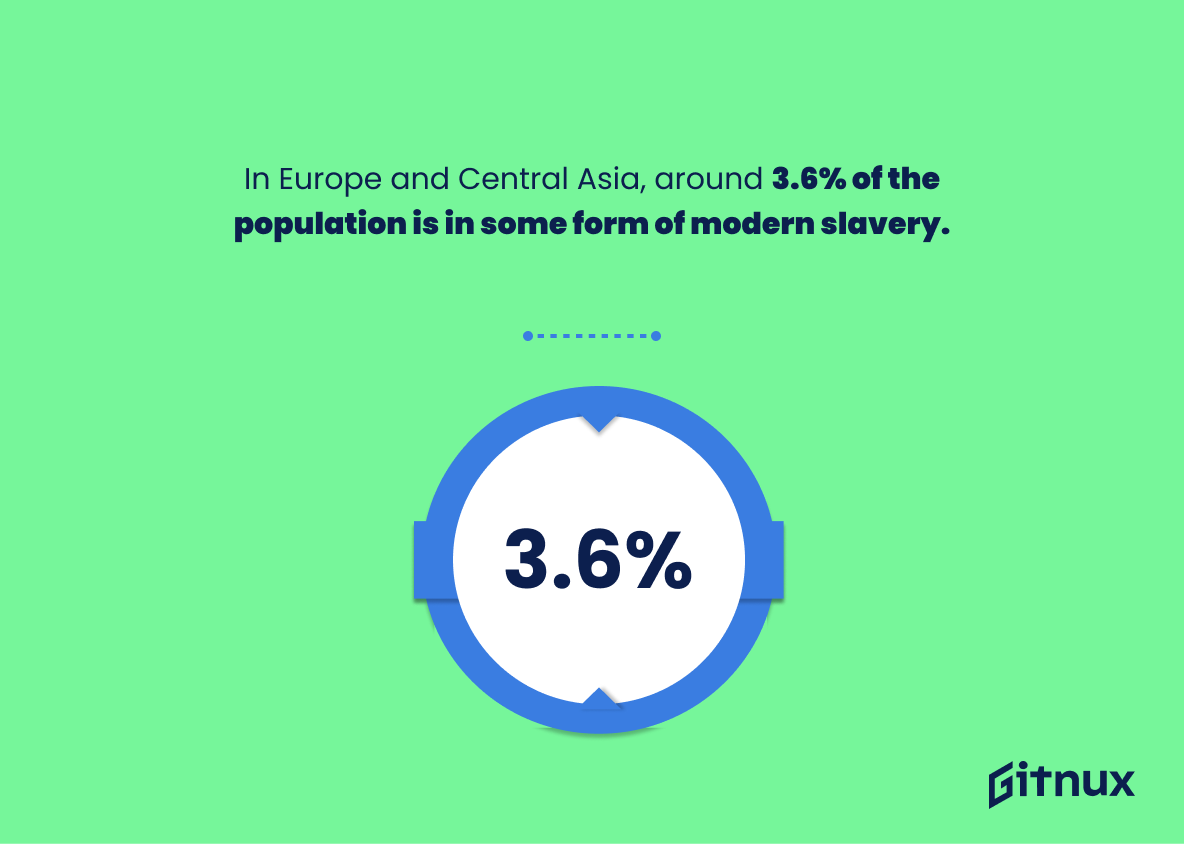In the contemporary world where freedom and human rights are fundamental values, it is both bittersweet and shocking to discover that modern slavery is much more prevalent than many of us would like to believe. Some may argue that it is a hidden issue, tucked away in the darkest corners of society, and wrapped in a complex tapestry of illicit activities and exploitation. Yet, the hard reality persists in the form of modern slavery statistics, absolute numbers that refuse to be ignored, shedding light on the silent victims who are trapped in a web of forced labor, human trafficking, and debt bondage. This blog delves deep into the chilling world of modern slavery, providing a statistical perspective to help bring about greater awareness and inspire urgent action against this global atrocity.
The Latest Modern Slavery Statistics Unveiled
More than 40.3 million people worldwide are victims of modern slavery, including 24.9 million in forced labor and 15.4 million in forced marriage.
The sheer magnitude of these numbers serves a shocking wake-up call, tearing away at the veil of ignorance we often wear towards modern slavery. Consider this – an astounding 40.3 million individuals stripped of their basic human rights world over, a figure comparable to the entire population of Spain. That’s not all, there’s a grim subplot to this story with this figure further delineating into 24.9 million people ensnared in forced labor and 15.4 million entrapped in forced marriages, bespeaking the prevalent yet usually unseen forms of slavery. These statistics are the resounding gong calling for our attention and involvement in the fight against this societal scourge in a blog post about Modern Slavery Statistics. They also act as the sharp scalpel, dissecting the problem to expose its many forms, thus guiding our strategies to tackle it.
One in four victims of modern slavery are children.
Highlighting the striking and unsettling fact that “One in four victims of modern slavery are children,” serves to unveil the heightened vulnerability of this demographic group in the global crisis of modern slavery. This alarming statistic holds a gravely important place in our discussion of Modern Slavery Statistics, not merely as a number, but as a heart-rending reality we must collectively address.
In shedding light on the youthful face of modern slavery, we aim to further underline the urgency and importance of finding durable and effective solutions to this grave issue. We harness these numbers not only to understand the scale of the problem, but to pinpoint the subsets of our global population that need our immediate attention and protection the most—our children.
For a blog post that strives to combat the scourge of modern slavery through enlightenment and action, this statistic doesn’t simply matter – it rallies, it pushes, it shocks, and ultimately, it motivates us to fight harder against this dreadful practice. The plight of these children, captured in this data, behooves us to broaden our understanding, influence policy-making, provoke community conversations, and inspire direct effort aimed at ending modern slavery.
The Asia-Pacific region accounts for the largest number of forced laborers in the world, 15.4 million people.
Highlighting the fact that the Asia-Pacific region is home to a staggering 15.4 million forced laborers not only unveils the alarming magnitude of modern slavery in this specific area, but it serves as a pointed arrow that directs our global attention toward a pervasive human rights issue. Considering this, it is within the Asia-Pacific realm that the battle against modern slavery must wage most fiercely. Armed with this knowledge, we are reminded of the urgency and significance of implementing, strengthening and enforcing anti-slavery policies, legislation or initiatives. This grim figure underscores the region’s critical role in global efforts to eradicate modern slavery, thereby painting a somber yet realistic backdrop for any discourse on modern slavery statistics.
71% of enslaved people are women and girls.
Highlighting that 71% of enslaved individuals are women and girls underscores a critical, alarming facet in the grim mosaic of modern slavery. Serving as a stark reminder, it draws attention to the disproportionate burden of this scourge shouldered by women and girls. In the labyrinth of systemic issues connected to gender inequality, this figure reflects a significant thread, and presents the desperate need for targeted intervention. The disquieting percentage echoes the urgent call to action, urging us to address, dissect and solve this manifestation of gender-biased oppression.
Of the total number of forced labor victims, 16 million people are exploited in the private sector.
Underscoring the alarming magnitude of this issue, the disquieting datum reveals that a staggering 16 million individuals, captive to forced labor, are being exploited in the private sector. This chilling figure humanizes the faceless many in our ongoing battle against modern slavery, and sends a potent message about the rampant use of coerced labor in business-oriented environments. It also uncovers the somber reality of a very pervasive form of modern day slavery, forcing us to pause, reflect, and act. This depiction in numbers is the contemporary vehicle to raise awareness and spur further discussion and action, making it a critical cornerstone in a post aimed at shedding light on the grim truth of modern slavery.
Forced labor generates an estimated $150 billion in profits per annum.
The staggering estimate of $150 billion in annual profits generated by forced labor acts as a harrowing testament to the sheer magnitude of modern slavery globally. This shocking financial figure infuses the blog post with an undeniable lucidity on the pervasive economic gains reaped from such human rights abuses. It provides readers with a tangible perspective on the scale of modern slavery, demonstrating that it is not just a moral or human issue, it’s profoundly ingrained in our global economy. By commodifying human labor without recompense, these illicit practices persistently undermine efforts to eradicate poverty and promote equality, making it a paramount topic for statistical examination in the discourse of modern slavery.
As of 2016, the estimated number of people in slavery in North Korea was over 2.6 million.
Tackling the issue of modern slavery, it’s hard to tread lightly around a staggering data point that suggests, in 2016, an astonishing 2.6 million individuals were estimated to be ensnared in the chains of forced labor in North Korea. Placing this vivid and unsettling number into sharper focus, it paints a piercing portrait of the undeniable prevalence and magnitude of modern-day slavery globally. In a blog post designed to throw light on this dark and pervasive societal problem, such a tectonic statistic stands as a harrowing testament to the rampant disregarding of human rights and dignity in particular nations. It propagates a steadfast reminder of the urgency of attention and action needed to disrupt this grim status quo, fostering a renewed commitment to eradicating modern slavery in all its forms.
Child labor is a form of modern slavery, and 152 million children worldwide are victims of child labor.
The statistic illuminating the grim reality, that 152 million children across the globe are ensnared in child labor – a cruel form of modern slavery, serves as a poignant outcry echoing through the corners of the world. This number is far from just being that, rather it humanizes the magnitude of suffering; each digit a child struggling in the clasp of forced work. In the context of a blog post about Modern Slavery Statistics, this shocking statistic anchors the urgency of the issue, scorching through the readers’ ignorance and indifference, urging them to acknowledge the dark reality of widespread child exploitation. It offers a perspective where compassion and action align, fueling the discourse on the reach and ramifications of modern slavery.
The United States was found to have an estimated 403,000 people in modern slavery in 2018.
In the vein of unfolding the stark reality of modern slavery, the startling figure from 2018, shedding light on an estimated 403,000 people shackled in the binds of modern slavery in the United States, uncovers a chilling truth. This statistic underpins the urgency to unravel and address the grim recesses of society that often remains shrouded in shadows. Revealing the sheer scale of the problem, it beckons onto readers the necessity to push for change. It amplifies the often-muted voices of victims and sends a call to arms for every visitor of our blog to join in the fight against these unseen chains. This number, more than just a statistic, serves as a testament to the persistence of a deeply entrenched issue, providing critical context to our ongoing discourse on modern slavery statistics.
Construction, manufacturing, transportation, and agribusiness are some of the sectors most involved in forced labor.
Highlighting the prevalence of forced labor in sectors such as construction, manufacturing, transportation, and agribusiness brings an unexpected depth to our understanding of modern slavery. By pivoting our lens onto this aspect, we realize that modern slavery is not just a horrific historical relic, but a bleak reality embedded in our everyday life. These figures underscore the shadow side of the industries we rely upon daily, giving us greater insight into the unseen consequences derived from our consumption habits. Painting a stark picture of how deeply rooted the atrocities of forced labor are within our society, these statistics act as a call to action, urging us all to look deeper into the ethical practices behind the goods and services we consume.
50% of people forced into modern slavery are involved in domestic work, agriculture or fishing.
Unveiling the harsh reality of modern slavery, this statistic propels us into the disturbing underbelly of day-to-day occupations like domestic work, agriculture or fishing. A pervasive issue lurking beneath the normalcy of life, it startlingly shows that every second person, condemned into this deplorable fate, occupies these jobs. This statistic is critical to comprehend the widespread, albeit hidden, nature of modern slavery and triggers an urgent call for action for strict enforcement of labor laws and human rights legislation. This alarming figure serves as a stark reminder that the threads of modern slavery are woven more intrically into our societies and economies than we may even realize, thus making it an indispensable inclusion in a blog post meant to shed light on the situation.
It’s estimated that 4.8 million people are trapped in forced sexual exploitation globally.
Undeniably, the magnitude of modern slavery can be fully captured by heading straight into the glaring statistic: an estimated 4.8 million people are ensnared in forced sexual exploitation worldwide. This hard-hitting figure tears open the veil, forcing us to peer into the grim reality of the situation. In the context of a blog post about Modern Slavery Statistics, it serves as a poignant reminder of the widespread prevalence of this horrendous crime. It grabs readers by their collars, jolting them into awareness and developing a deeper understanding of the pervasive issue. Further, it ignites a sense of urgency, pressing for immediate action and policies to combat it. By injecting such a staggering number into the conversation, it anchors the scope and severity of forced sexual exploitation in modern slavery into the minds of readers.
99% of adults and children trafficked for sexual exploitation are females.
Shining a stark light on the grim reality of modern slavery, the statistic that ‘99% of adults and children trafficked for sexual exploitation are females’, serves as a chilling wake-up call. It screams the urgency of addressing gender-based inequalities pervading society. This number prompts a deeper understanding of how this unspeakable crime disproportionately affects women and girls, making it clear that any serious discussion, analysis, or action plan to tackle modern slavery must prioritize women’s safety and rights. Furthermore, this figure underlines the need for legislative changes, reformative practices, and campaigns focused on bringing about a change in societal attitudes towards women, both at the policy and ground level. The statistic wields the power not only to inform but to incite and inspire action, fueling a global commitment to pulling the roots of modern slavery from our societies.
Migrants are particularly vulnerable to forced labor – accounting for 58% of all victims of forced labor.
Within the terrain of modern slavery statistics, figures narrating the plight of migrants emerge with stark emphasis. The assertion that a striking 58% of all victims of forced labor are migrants throws the spotlight on an alarming disparity. It accentuates how this demographic, often navigating unfamiliar terrains in the pursuit of better lives, finds themselves ensnared in exploitative circumstances tragically far from anything they envisioned.
This statistic is a resonant call to action. It draws attention to the immediate and urgent need for protective mechanisms that shield migrants by flagging, combatting, and eliminating the structures that predispose them to ensnarement in forced labor. The 58% affixture isn’t just a number; it’s an indictment of current realities and a rallying cry for turning the tide on the grim faces of modern slavery.
By understanding this statistic in its depth, one is not just reading a blog post, but contributing to a collective awakening about the need for safeguarding the rights of those who, compelled by a range of circumstances, are on the move in search of a better life. These figures challenge us to interrogate the status quo and sow the seeds for a world where liberty isn’t a luxury but a fundamental, non-negotiable right for all.
In Europe and Central Asia, around 3.6% of the population is in some form of modern slavery.
Undoubtedly, the striking revelation that approximately 3.6% of the population in Europe and Central Asia are entangled in modern slavery serves as a stern wake-up call. This not only underscores the poignant reality that despite modernization and laws against human trafficking, the shackles of slavery still persist, but also delineates the geographical pervasiveness of this heinous crime. As we delve deeper into the rabbit hole of modern slavery statistics, this startling figure acts as a grim benchmark, compelling readers to reflect upon the scale of the issue and acknowledging the necessity for swift and decisive action.
Conclusion
Modern slavery continues to pose an enormous challenge around the world. The staggering statistics vividly illustrate the magnitude of this widespread menace, and are a wake-up call for both policy makers and the public. However, statistics are much more than just numbers. They represent individuals – men, women, and children who find themselves entrapped in horrific conditions against their will. As we continue consolidating efforts to combat modern slavery, accurate and comprehensive data will be indispensable in shaping policies, strategies, and interventions. With collective action, awareness, stringent legislation, international cooperation, and commitment to human rights, we all play a part in reducing these alarming statistics and inching closer to a world free from the shackles of modern slavery.
References
0. – https://www.www.globalslaveryindex.org
1. – https://www.www.antislavery.org
2. – https://www.www.ilo.org
